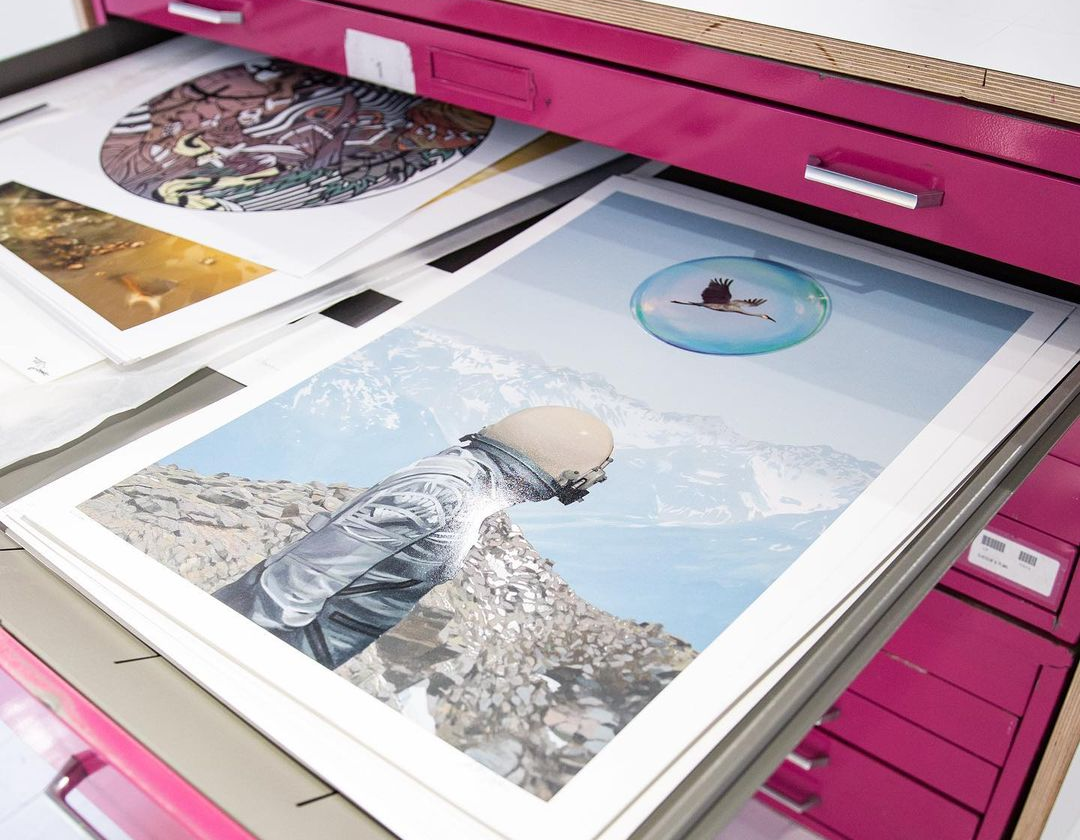The latest edition of A Global Street Art Story bring us to Egypt with the print No to Stripping the People by Bahia Shehab. Resulting from the past and present turmoil in Egypt, the print is representative of the street art created during the country’s recent revolution. When protests and revolts filled the streets of Cairo in 2011, Shehab began spraying images of No in the streets: no to dictators, no to violence, no to injustice.

Originally a stencil painted by Shehab, No to Stripping the People symbolizes a specific instance from December 2010 in which a young woman was publicly beaten by Egyptian military in Tahrir Square. During the attack, the police disrobed half of the woman’s abaya, revealing her blue bra.The image of this brutality rapidly became a symbol of the abuse by the Egyptian military. “The blue bra is to remind us of our shame as a nation when we allow a veiled woman to be stripped and beaten on the street,” described Shehab in a 2012 interview.

No to Stripping the People
Although street art and graffiti were not necessarily new to the region, the movement has exploded as a form of grassroot resistance during the various Arab Springs revolutions, most notably in Egypt. Shehab was one of many artists and activists who covered Cairo's streets and alleyways with murals, stencils, and wheatpastes to communicate political and social messages. “Graffiti is like flowers. They are beautiful, but they don’t live long,” states Shehab. "I believe that art can change lives. It's a very powerful tool...Art can be perceived by anybody on different levels. The more art there is in the public sphere, the better the society around it.” Shehab’s protest campaign of spraying the word “no” became widely known throughout the world via the internet, helping herself and the movement gain greater recognition.

You can step on the flowers, but you cannot delay the Spring
The image is a part of Shehab’s art installation and book, A Thousands Times No: The Visual History of Lam-Alif, published in 2010. The common expression in Arabic, no and a thousand times no, represented Shehab’s sentiments of opposition towards contemporary social and political issues in Egyptian. As an art historian in Arabic script, Shehab decided to trace the evolution of the word “no” (lam-alif) in Arabic. Shehab hunted for 1000 different “NO”s produced in the last 1400 years under Arabic/Islamic patronage, finding the lam-alif on mosques, architecture, textiles, pottery, and books. Shehab incorporated her historical findings into an art installations and her street art.

No to Military Rule

No to Burning Books
No to Stripping the People is the first limited edition silkscreen print for Bahia Shehab. Reflecting the urban stencil of Shehab flawlessly, the print represents the revolutionary streets of Egypt. Above the imagery of the blue bra is the title, No to Stripping the People, written in Arabic, as well as the phrase “long live the revolution,” written within the outline of the footprint. The print will be available Thursday May 14th at noon EST.

__________
Bahia Shehab (b.1977) is an artist, designer and Islamic art historian studying ancient Arabic script and visual heritage. Shehab is a Creative Director with MI7-Cairo working on projects relevant to cultural heritage and she is also associate professor of professional practice at The American University in Cairo. She has developed and launched the new graphic design program for the Department of the Arts with courses mainly focused on the visual culture of the Arab world. She is currently a PhD candidate at Leiden University in Holland. Her research is on Fatimid Kufic inscriptions on portable items in the Mediterranean basin and beyond. She was recently featured in Nefertiti's Daughters, a documentary highlighting female artists in the Egyptian Revolution.
